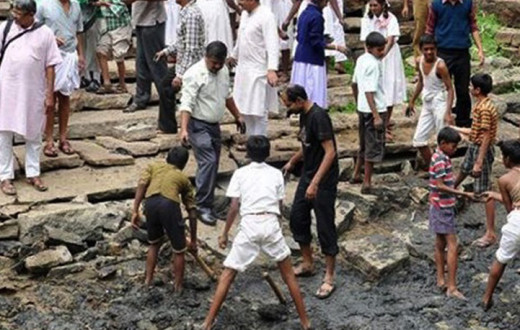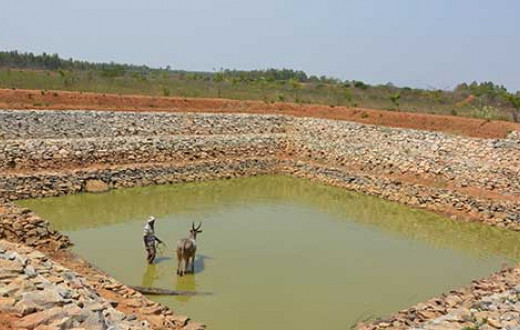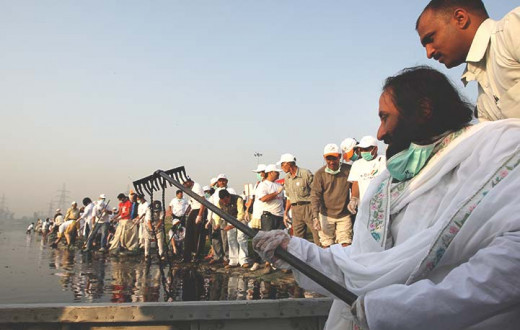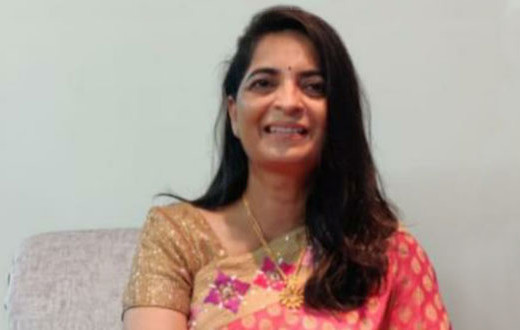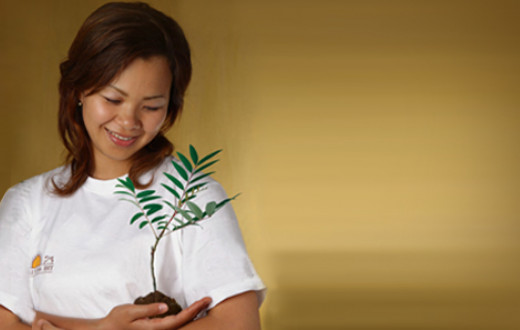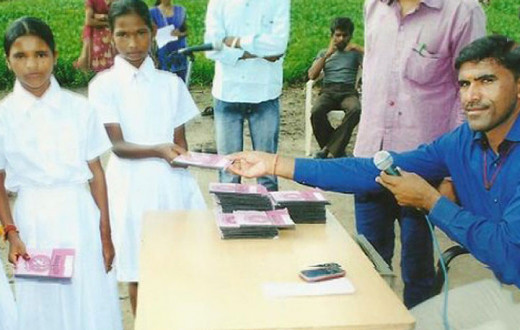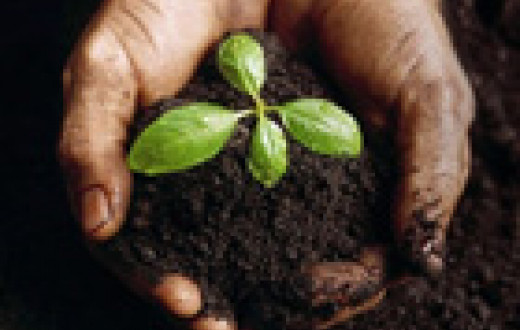Overview
Location: Chikkaballapur, Karnataka
Duration: Feb 2015 - Present
In the recent past, the majestic Palar river flowed through the three states of Karnataka, Andhra Pradesh and Tamil Nadu with lush natural vegetation decorating its banks. Flowing even in time of drought, the river fed and replenished numerous wells and streams, ultimately merging into the Bay of Bengal. Today, the soil has corroded, its basin is filled with silt, and the wells and streams are a thing of the past.
In February 2015, directions were issued from the government to undertake river rejuvenation works of Palar in the district of Chikkaballapur under the Mahatma Gandhi National Rural Employment Guarantee Act (MGNREGA). It was decided that the rejuvenation works for the Palar river basin would be undertaken by the government with technical assistance from The Art of Living.
Throwing light on the continuing work to rejuvenate the river Palar, Dr. Lingaraju, project director, says: “Our aim is to recharge groundwater and rejuvenate river streams, ponds, and lakes so that farmers get the required water.”
What change did we bring?
Technical expert for the Palar Project, Mr. K.R Shettar shares: “In general, at least three monsoons are necessary to see any impactful change. However, in Kaiwar (a small town in the Chikkaballapur district of Karnataka), a single monsoon, has improved the groundwater level and there is water in bore wells.”
While soil erosion causes silt depositing in lakes, massive planting of trees has helped prevent soil erosion and retain ecological balance. Along with the farmers, The Art of Living has been planting trees alongside the river.
A ‘Narayana Vana’ has been created at Kaiwara, as a part of the rejuvenation project. There are 32 species of rare and endangered plants, like Sita Ashoka (helpful in relieving stress and addressing gynecological problems), Kadambi (traps dust) and Atti tree (other organisms and birds nest in this tree). In total, there are around 200 trees and 2,000 herbs and shrubs in this Vana.
How does the journey look so far?
The project progress is as follows:
- Constructed 60 recharge wells
- Built 40 boulder checks
- Made 2 water pools
- Planted 10,000 saplings
- Narayanavana, a grove of 32 different varieties of medicinal plants created
- Reached out to a population of 7,000 spread across 12 villages
How did we work?
Thematic maps were generated using satellite imageries which were then overlaid and integrated to prepare the action plan for the rejuvenation of the river. The layers of thematic maps are slopes, soils, drainage, water bodies, geomorphology, land use, village boundaries and also road network.
After integrating all the layers of natural resource information, field visits were undertaken to select appropriate sites using handheld GPS for water harvesting and groundwater recharge structures. Sites were also selected for tree plantation to enhance groundwater recharge naturally.
What did we learn?
There have been some important learnings in this project. Some of them include:
- Availability of adequate quantity of water for agriculture, villages, and towns can be best ensured by protecting water bodies and continuously recharging ground water level in the target areas.
- The water bodies can be protected with periodical de-silting for which participation of local villagers is to be ensured by creating awareness on the importance of water bodies.
- Where large-sized water lakes are completely dried up due to silt accumulation over decades of years and complete de-silting is not feasible, water ponds can be constructed inside such lakes to hold rainwater being received from catchment areas. This water would otherwise spread over the large area and evaporate completely. The retained water would slowly seep into the earth and over a few years start accumulating as groundwater.
- There can be an immediate increase in groundwater level in some places that have conducive factors. Few places in Palar Basin where works were completed did give immediate results, attracting the involvement of local villagers and people representatives. Decades of destruction caused by human intervention in the natural cycle of recharging can be reversed only by long and sustained efforts.
How can you contribute?
Apart from the monetary contribution of corporations and individuals, contribution in terms of technical expertise and writing stories and reports on the development of the project would also help.

